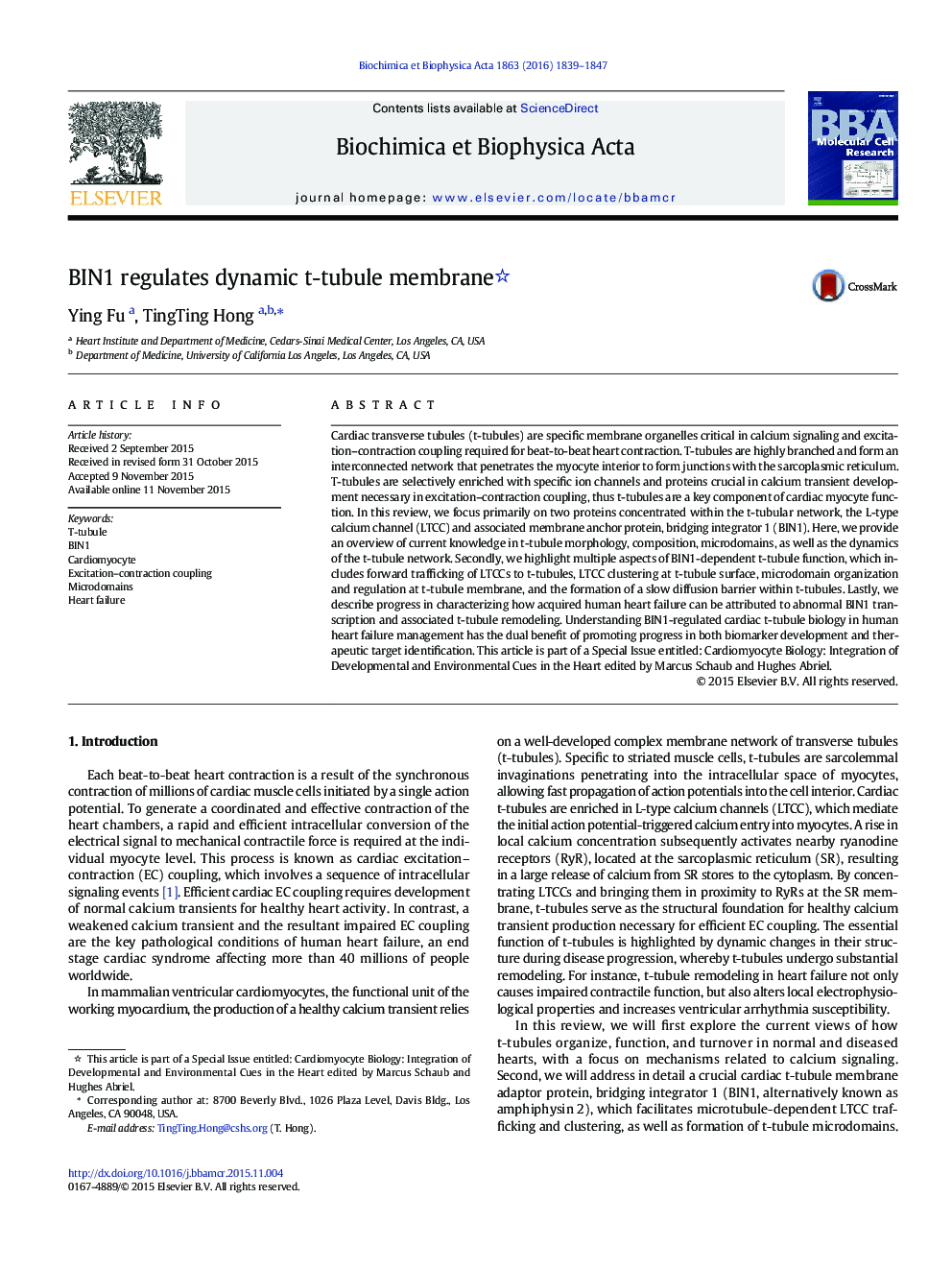| Article ID | Journal | Published Year | Pages | File Type |
|---|---|---|---|---|
| 10801646 | Biochimica et Biophysica Acta (BBA) - Molecular Cell Research | 2016 | 9 Pages |
Abstract
Cardiac transverse tubules (t-tubules) are specific membrane organelles critical in calcium signaling and excitation-contraction coupling required for beat-to-beat heart contraction. T-tubules are highly branched and form an interconnected network that penetrates the myocyte interior to form junctions with the sarcoplasmic reticulum. T-tubules are selectively enriched with specific ion channels and proteins crucial in calcium transient development necessary in excitation-contraction coupling, thus t-tubules are a key component of cardiac myocyte function. In this review, we focus primarily on two proteins concentrated within the t-tubular network, the L-type calcium channel (LTCC) and associated membrane anchor protein, bridging integrator 1 (BIN1). Here, we provide an overview of current knowledge in t-tubule morphology, composition, microdomains, as well as the dynamics of the t-tubule network. Secondly, we highlight multiple aspects of BIN1-dependent t-tubule function, which includes forward trafficking of LTCCs to t-tubules, LTCC clustering at t-tubule surface, microdomain organization and regulation at t-tubule membrane, and the formation of a slow diffusion barrier within t-tubules. Lastly, we describe progress in characterizing how acquired human heart failure can be attributed to abnormal BIN1 transcription and associated t-tubule remodeling. Understanding BIN1-regulated cardiac t-tubule biology in human heart failure management has the dual benefit of promoting progress in both biomarker development and therapeutic target identification. This article is part of a Special Issue entitled: Cardiomyocyte Biology: Integration of Developmental and Environmental Cues in the Heart edited by Marcus Schaub and Hughes Abriel.
Related Topics
Life Sciences
Biochemistry, Genetics and Molecular Biology
Biochemistry
Authors
Ying Fu, TingTing Hong,
